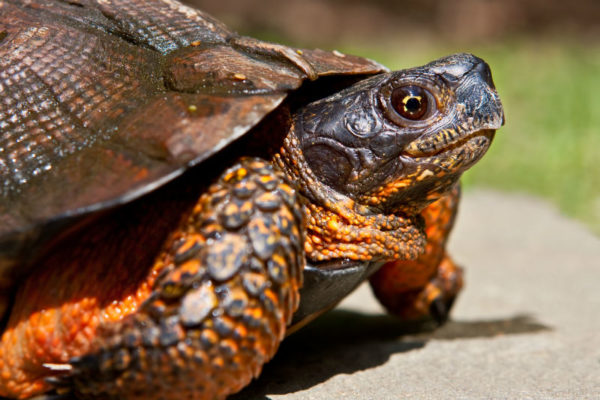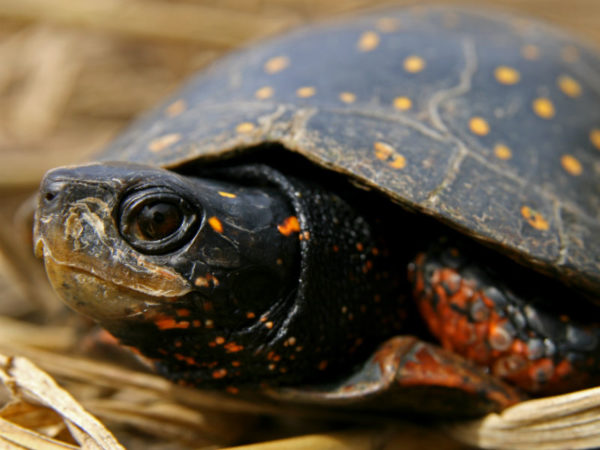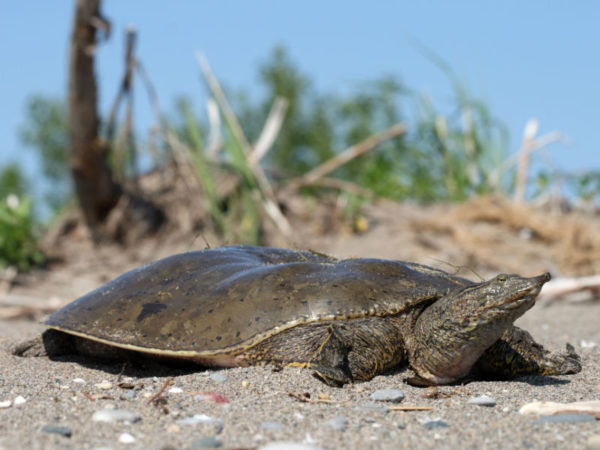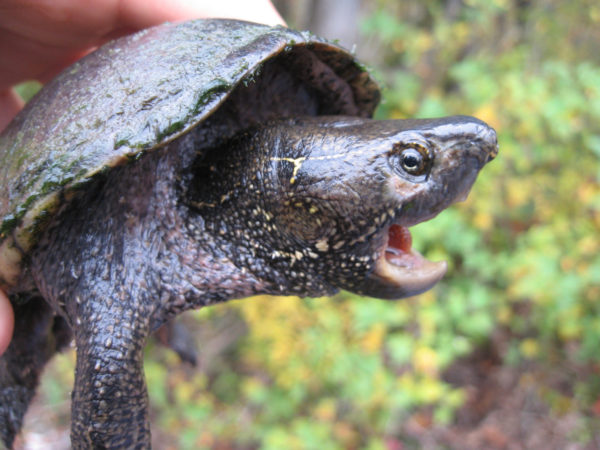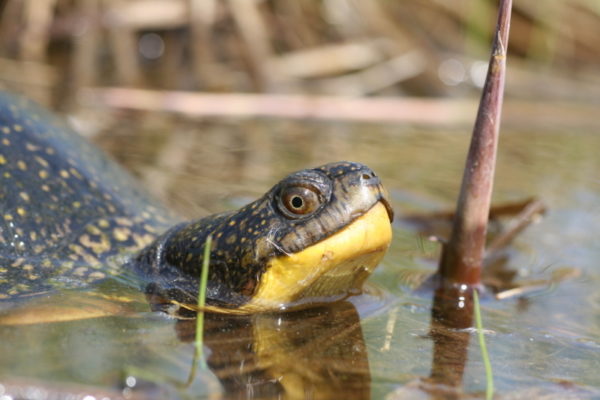Five at-risk freshwater turtle species
Each of Canada’s 10 native freshwater turtle species are assessed as endangered, threatened or special concern in at least one part of the country. Despite turtles’ tough shells, which have helped them survive predators, traps and even mass extinctions, modern threats such as busy roadways and habitat destruction have put these prehistoric creatures in jeopardy.
WWF-Canada is working to address some of the threats facing freshwater species like turtles by performing the first ever nation-wide assessment of our watersheds. The Ontario Turtle Conservation Centre – Ontario’s only conservation centre dedicated to caring only for turtles – is a recipient of WWF-Canada’s Go Wild Community Grants presented by TELUS. The centre admits more than 800 adult turtles for treatment and rehabilitation each year and releases over 1,000 hatchling turtles as part of their headstarting program, including these five at-risk species.
Wood turtle (Glyptemys insculpta)
This mid-sized semi-aquatic turtle was once known as “old red leg” because of its distinct, rusty-coloured legs. It’s also one of few turtle species in Canada that doesn’t shed sections of its shell. The wood turtle is currently listed as threatened under the National Species at Risk Act, which means that without intervention the species could soon become endangered. The wood turtle can be found in or along clear, slow-flowing rivers, streams and creeks, scattered throughout Nova Scotia, New Brunswick, Southern Quebec and Ontario. However, it also spends a great deal of time on land, making it a semi-terrestrial species.
Spotted turtle (Clemmys guttata)
The spotted turtle’s smooth, shiny black shell, spattered with yellow-and-orange spots, makes it easy to recognize, but that doesn’t mean it’s simple to spot. Not only is it one of Canada’s smallest turtles, it’s also endangered. Habitat loss is a major threat to the estimated 2,000 spotted turtles living in the southern part of Ontario. In fact, something as simple as digging a ditch along a road could be enough to wipe out entire populations, which is why only a few are considered large enough for long-term survival. It’s beautiful shell also makes it a popular species in the illegal pet trade.
Spiny softshell (Apalone spinifera)
Unlike most turtles, the spiny softshell has just that – a soft shell, which is further distinguished by its flat round shape, leathery texture, olive-or-tan colour and dark blotches. This turtle is also known for its snorkel-like snout, a fitting feature for the highly aquatic species. It rarely travels far from the rivers and lakes of Southwestern Ontario, where remaining Canadian populations are primarily found. The spiny softshell is threatened, which means it could quickly become endangered if the degradation of its habitat continues.
Eastern musk turtle (Sternotherus odoratus)
This dull black-brown turtle is named for the musky smell it emits from the glands along the bottom of its shell. It’s a strong, skunk-like odour, which is why the eastern musk turtle is sometimes known as the stinkpot. But if the smell doesn’t give this turtle away, its narrow, highly arched shell might. Although it was once common in southwestern Ontario, this small turtle is now listed as threatened and is primarily found along the southern edge of the Canadian Shield in Ontario and Quebec.
Blanding’s turtle (Emydoidea blandingii)
Although Blanding’s turtles generally live in shallow lakes or large wetlands around the Great Lakes Basin and in parts of Nova Scotia, it’s not uncommon to find these threatened turtles hundreds of metres from a body of water, especially if they’re looking to nest or mate. Blanding’s turtles look like many imagine a typical turtle: the top half of the turtle’s shell is dark brown or green and dome-shaped, resembling an army helmet, while the bottom half, known as the plastron, is a rich yellow that matches its chin and throat.
Written by Jenna Wootton

